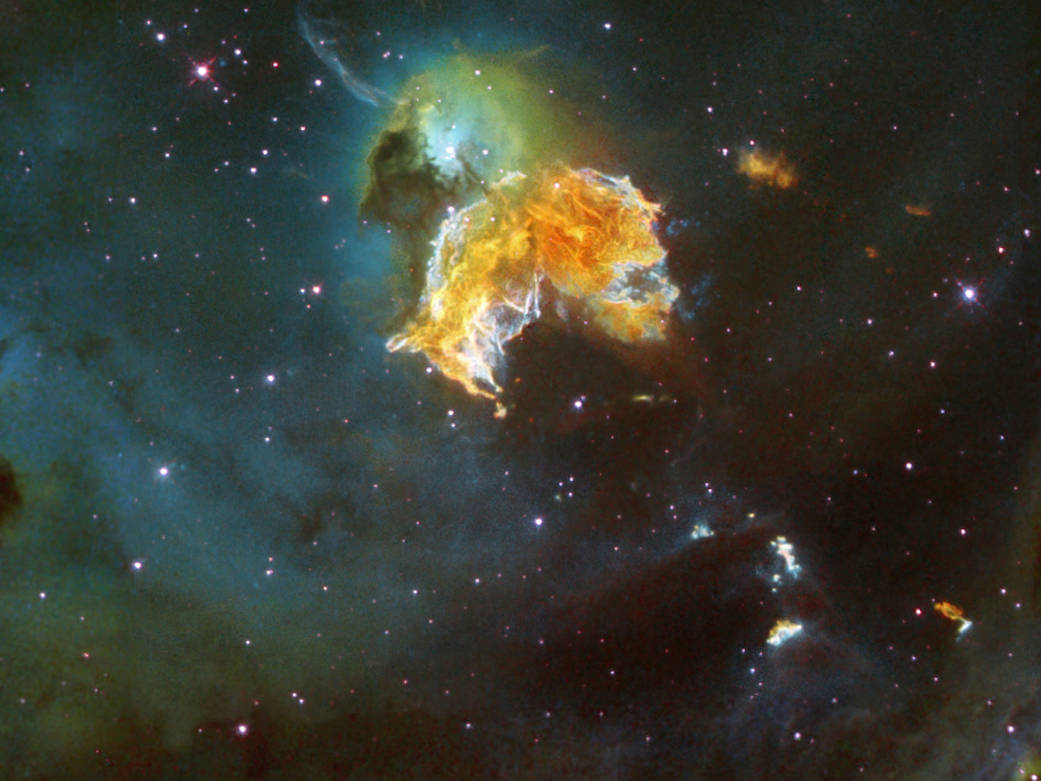After traveling for about half the age of the universe, a flood of powerful gamma rays from a distant galaxy slammed into Earth’s atmosphere in April 2015. The gamma rays met our atmosphere and formed a cascade of light that fell onto the waiting mirrors of the Very Energetic Radiation Imaging Telescope Array System (VERITAS) in Arizona. The resulting data have given astronomers a unique look into that faraway galaxy and the black hole engine at its heart.
What Are Gamma Rays?
Gamma rays are photons of light with very high energies. These gamma rays came from a distant galaxy known as PKS 1441+25, which is a rare type of galaxy known as a blazar. At its center lies a supermassive black hole surrounded by a disk of hot gas and dust.
As matter from the disk swirls toward the black hole, some of it gets channeled into twin jets that blast outward like water from a fire hose, only much faster. In fact, the jets approach the speed of light. One of those jets is aimed in Earth’s direction, giving us a view straight into the galaxy’s core.
“We’re looking down the barrel of this relativistic jet,” explains Wystan Benbow of the Harvard-Smithsonian Center for Astrophysics (CfA). “That’s why we’re able to see the gamma rays at all.”
Where Are Gamma Rays?
One of the unknowns in blazar physics is exactly where the gamma rays come from. Using data from VERITAS and the Fermi Gamma-ray Space Telescope, the researchers found that the source of the gamma rays was within the relativistic jet, but surprisingly far from the galaxy’s black hole. They appeared to come from an area about five light-years away from the black hole.
Moreover, the region emitting gamma rays was larger than typically seen in an active galaxy, measuring about a third of a light-year across. A light-year is the distance light travels in one year, or about 6 trillion miles.
Researchers aren’t able to measure high-energy gamma rays very often, as they tend to be absorbed at the source or somewhere along their long journey to Earth. When the galaxy flared to life, it must have generated a huge flood of gamma rays for some of them to reach Earth. “These jets tend to have clumps in them. It’s possible that two of those clumps may have collided and that’s what generated the burst of energy,” says Matteo Cerruti of the CfA.
These findings are published in the journal Astrophysical Journal Letters.
Image: This artist’s conception shows a blazar—the core of an active galaxy powered by a supermassive black hole. Courtesy of M. Weiss/CfA
GotScience.Org translates complex research findings into accessible insights on science, nature, and society. Help keep GotScience free! Donate or visit our gift shop. For more science news subscribe to our science newsletter!




